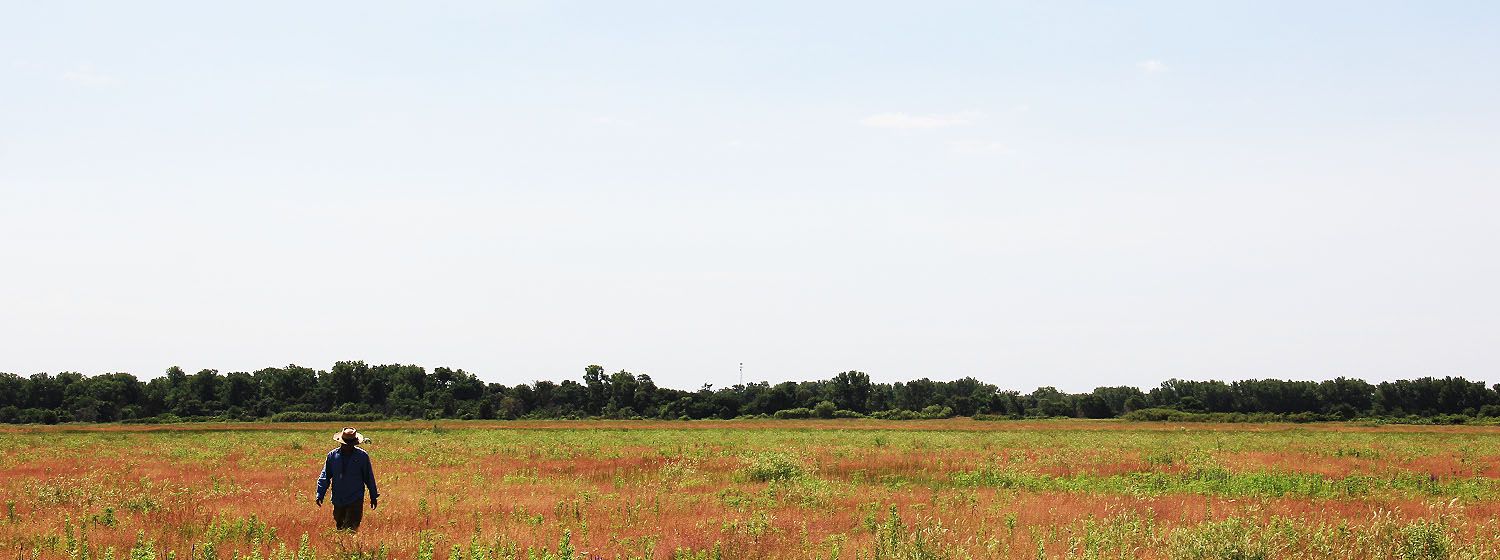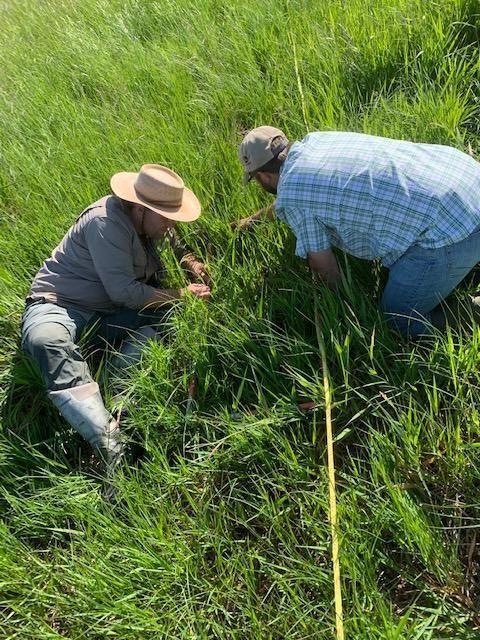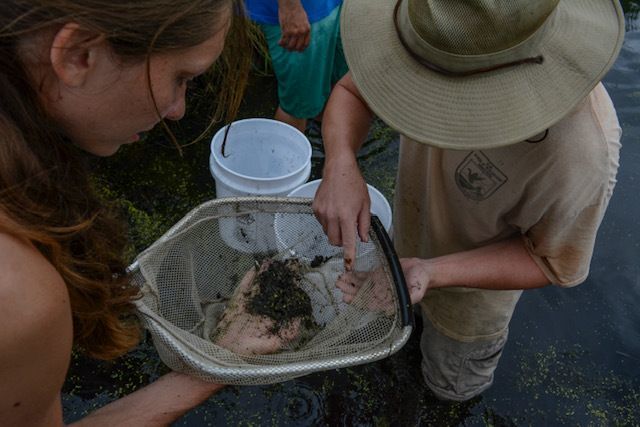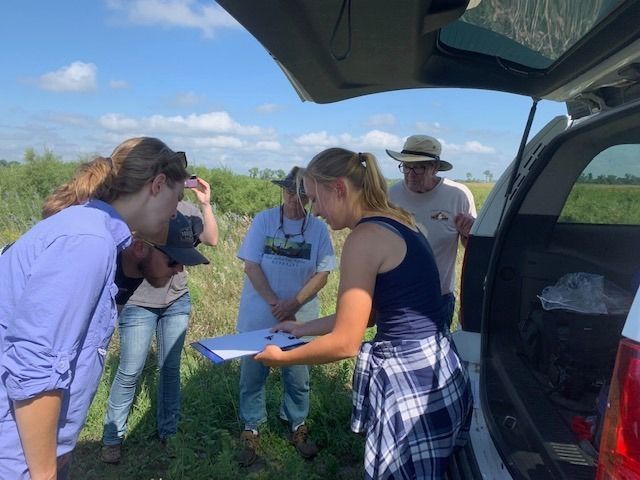Long Term Biological Research Program
Our long-term biological research program operates in conjunction with our land management program to meet the objectives laid out in our the Crane Trust charter to “maintain the physical, hydrological, and biological integrity” of the Big Bend Reach of the Platte River as “a life-support system for the Whooping Crane and other migratory species that utilize it”.
About the Program
It was clear from the institution’s founding that achievement of our conservation goals would depend heavily upon a comprehensive understanding of the native ecosystem remaining in the region. Article “A” of the Crane Trust’s declaration was “to establish a written habitat monitoring plan which can be used to describe change” within the Big Bend of the Platte River. To this end, a number of biological inventories including birds, vascular plants, small mammals, herpetofauna, insects, and fish were conducted in the early 1980s, and for a period of time long-term research efforts were undertaken. However, despite the clarity of the Crane Trust’s original declaration, long-term habitat monitoring research has not continued unabated throughout the organization’s history. Given these gaps, staff was tasked with revitalizing and reconfiguring this program beginning in 2015.
Our program is dedicated to studying, understanding, and communicating the land management and restoration techniques that best promote native biodiversity and habitat for species of concern. Many outcomes of management, such as controlled burns, are not fully realized for many years and require sustained evaluation to adequately assess habitat response. For instance, our research indicates controlled burning on longer rotations (7-8years), as opposed to typical regional conservation programs (3-4 years), and across smaller portions (less than 20%) of contiguous prairie will preserve Regal Fritillary habitat in lowland tallgrass prairies. Ecological processes take place at various timescales often spanning several years, decades, and beyond. Long-term research is particularly important in the era of global climate change. Tracking changes in phenology, such as plant species fruiting and flowering timings, breeding bird nesting dates, and other phenomena will contribute to scientific understanding of the effects of climate change and enable us to make sound land management decisions in a dynamic context. For example, research indicates warm winter temperatures can paradoxically promote cool season invasive exotic grasses which are adapted to photosynthesize during lower temperatures than our native species. In particular, smooth brome (Bromus inermis) is able to grow longer into the fall and begin growing earlier in the spring compared to native warm season grasses like big bluestem (Andropogon gerardii), providing it a competitive advantage. By studying these temporal changes we can adapt to them. As an example, we can time controlled burn efforts and heavy pulses of grazing to limit smooth brome growth before it produces viable seed, structuring an advantage for warm season grasses gain cover.
In the summer of 2015 we installed a long-term research and monitoring plot layout system, where sampling locations were stratified by land use history, soil type, and vegetative community allowing sufficient replication to detect changes in the biological community following management efforts. Long-term vascular plant, avian, small mammal, and butterfly species of concern data has been collected since 2015 on regular cycles utilizing standardized methodologies. We have also continued ground water level monitoring begun in 2012 and slough fish community monitoring efforts begun in 2013. We are tracking a number of biological indicators sensitive to landscape level changes, climate trends, and management actions. These indicators can be viewed as “vital signs” as they reflect the overall health and condition of the ecosystem.
Monitoring variables are interrelated and vary together, but also can be viewed as outcome or dependent variables in various experimental contexts. For instance, woody plant encroachment on prairies denudes small mammal diversity and produces changes in the bird community present. These biological community responses can be evaluated as interrelated dependent variables in response to management actions such as fire, woody species control, and grazing. We have placed a particular focus on better understanding the differential impacts of Bison and Cattle grazing, fire timing and frequency, and the removal of (Eastern Red Cedar) tree species on endemic native biodiversity, in particular the avian and vegetative communities.
Components
Plot Layout: The plot layout was established by consulting various aerial maps and soil maps between the years of 1938-2013. All biological monitoring plots are permanently established with geo-located capped posts.
Vegetation Monitoring: The Crane Trust vegetation is regularly assessed utilizing multiple standard methodologies. These surveys are on regular cycles to assess the changes in the vegetation community and structure following management actions, periods of drought, and variations in the precipitation regime. Vegetation samples are also archived in our herbarium, which houses currently nearly 1,500 individual specimens.
Bird Monitoring: Avian point count and transect surveys are conducted throughout the year with a focus on the breeding seasons as well as peaks in migration regarding species of interest. This data, in conjunction with vegetation and land management, data helps us to determine the management contexts and plant communities in which various species prefer to nest or forage during migration.
Small Mammal Monitoring: We utilize Sherman Box Traps on permanently marked transect lines for 3-night periods at 12 sites during the late summer and early fall to assess small mammal diversity and abundance. Small mammals are important to functioning prairie ecosystems (raptor food source, seed distributors, etc.) and our research is focused on assessing the impacts of different grazing practices (stocking rates, bison vs. cattle, etc.) and fire frequencies on their abundances and populations.
Groundwater Monitoring: Since 2012 the Crane Trust has used transducer and barologger sensors to collect and record groundwater data hourly across the property. These instruments record fluctuations in the depth of groundwater that is closely related to river water levels. This data is used to further our understanding of wet meadow hydrology, an imperiled ecosystem the Crane Trust is dedicated to protecting.
Butterflies: As both the Monarch and Regal Fritillary are facing strong declines, they are being considered for addition on the Endangered Species List. We are studying populations and trends of each butterfly species that utilize our properties to gain perspectives on their habitat needs and advocate for their conservation.
Fish Monitoring: Our fish monitoring efforts are focused around population trends of small-bodied endemic species of concern. Between August and September we use seine nets to collect yearly data at set locations in grassland sloughs across the property. These wetland sloughs are linear depressions are often associated with historic river channels along the Platte River and are now filled solely by groundwater and periodic precipitation. Our goal is to track trends in the ration of native slough-dwelling fishes, like the plains topminnow, to exotic-invasive species, especially western mosquitofish.
Andrew J. Caven and Joshua D. Wiese






